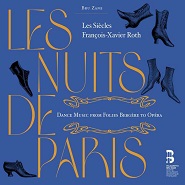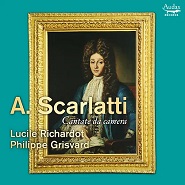Michel Wessel mit weiteren Mozart-Sonaten
In der Reihe Mozart The Double-Faced präsentiert Michael Wessel die Klaviersonaten Nr. 13, 14 und 16 sowie die Fantasie KV 475. Seine feinsinnigen Interpretationen beschreibt Wessel im Textheft. Es gelingt ihm eine überaus transparente Deutung, die gleichzeitig sehr spontan wirkt, immer rhetorisch und mit grazil eleganter Virtuosität in den schnellen Sätzen. In den langsamen Sätzen ist sein Spiel poetisch sinnerfüllt. Die klare Behutsamkeit zeugt von seiner Einfühlungsgabe in eine seelische Dimension der Musik, ohne dabei gefühlsselig zu werden. Genauso mustergültig und angenehm wie Wessels Spiel ist auch die Tonaufnahme von Manfred Schumacher. – In the series Mozart The Double-Faced Michael Wessel presents the piano sonatas Nos. 13, 14 and 16 as well as the Fantasy KV 475. Wessel describes his subtle interpretations in the text booklet. He succeeds in giving an extremely transparent interpretation that at the same time seems very spontaneous, always rhetorical and with gracefully elegant virtuosity in the fast movements. In the slow movements his playing is poetically full of meaning. The clear cautiousness testifies to his empathy for a soulful dimension of the music, without becoming sentimental. Just as exemplary and pleasant as Wessel’s playing is the sound recording by Manfred Schumacher. (Ars Produktion 38343) ) – ♪♪♪♪
Musik für die Mandora
Klösterlich Kurtzweyl nennt sich eine CD vom 2014 gegründeten Ensemble Rosarum Flores beim Label Musikmuseum. Im Mittelpunkt steht ein vergessenes Instrument, die aus der Provence stammende Mandora, ein Lauteninstrument. Gespielt werden Stücke von meist anonymen Autoren aus verschiedenen Stiftsbibliotheken sowie von P. Caspar Ebenthal, und Johann Zach. Es ist ein angenehm leichtes, oft tänzerisches Programm, das viel Charme verstrahlt und mit einigen passenden Gesangseinlagen aufgelockert wird. – Klösterlich Kurtzweyl is the name of a CD by the Ensemble Rosarum Flores, founded in 2014, on the Musikmuseum label. The focus is on a forgotten instrument, the mandora, a lute instrument originating from Provence. Played are pieces by mostly anonymous authors from various monastery libraries as well as by Fr. Caspar Ebenthal, and Johann Zach. It is an agreable, light, often dance-like program that radiates a lot of charm and is livened up with some appropriate vocal interludes. (Musikmuseum CD13061) – ♪♪♪♪
Tanzen in Paris
 François-Xavier Roth und das Orchester Les Siècles haben französische Tanzmusik aus dem 19. Jahrhundert aufgenommen, mit Musik von Saint-Saëns, Massenet, Gounod, Thomas, Delibes, Waldteufel und anderen. Roth, die Nelke im Knopfloch, zeigt viel Sinn für den unwiderstehlichen Charme der Musik, Gefühl für Farben, für Akzente und inneres Leben der einzelnen Stücke. Seine Art, die gute Laune der Kompositionen mit unnachahmlichem Gusto unverfälscht ins Schweben zu bringen, wird zum Markenzeichen dieser köstlichen CD. – François-Xavier Roth and the orchestra Les Siècles have recorded French dance music from the 19th century, with music by Saint-Saëns, Massenet, Gounod, Thomas, Delibes, Waldteufel and others. Roth, the carnation in his buttonhole, shows much sense of the music’s irresistible charm, feeling for colors, for accents and inner life of each piece. His way of making the good mood of the compositions float with inimitable gusto becomes the trademark of this delightful CD. (Bru Zane BZ 1005) – ♪♪♪♪
François-Xavier Roth und das Orchester Les Siècles haben französische Tanzmusik aus dem 19. Jahrhundert aufgenommen, mit Musik von Saint-Saëns, Massenet, Gounod, Thomas, Delibes, Waldteufel und anderen. Roth, die Nelke im Knopfloch, zeigt viel Sinn für den unwiderstehlichen Charme der Musik, Gefühl für Farben, für Akzente und inneres Leben der einzelnen Stücke. Seine Art, die gute Laune der Kompositionen mit unnachahmlichem Gusto unverfälscht ins Schweben zu bringen, wird zum Markenzeichen dieser köstlichen CD. – François-Xavier Roth and the orchestra Les Siècles have recorded French dance music from the 19th century, with music by Saint-Saëns, Massenet, Gounod, Thomas, Delibes, Waldteufel and others. Roth, the carnation in his buttonhole, shows much sense of the music’s irresistible charm, feeling for colors, for accents and inner life of each piece. His way of making the good mood of the compositions float with inimitable gusto becomes the trademark of this delightful CD. (Bru Zane BZ 1005) – ♪♪♪♪
Katherine Nikitine spielt Balakirev
Auf ihrem ersten Soloalbum spielt die französische Pianistin Katherine Nikitine 11 Kompositionen von Mili Balakirev, reizvoll poetische und hoch virtuose, darunter die Orientalische Fantasie Islamey. Dabei geht es Nikitine nicht um vordergründige Brillanz, sondern sie versucht Persönlichkeit zu zeigen mit ungewohnten Farben und sehr eigenwilligen rhythmischen Wendungen. Das macht ihre CD interessant. – On her first solo album, French pianist Katherine Nikitine plays 11 compositions by Mili Balakirev, delightfully poetic and highly virtuosic, including the Oriental Fantasy Islamey. Nikitine is not concerned with superficial brilliance, but tries to show personality with unusual colors and very idiosyncratic rhythmic turns. This makes her CD interesting. – (Hortus 211) – ♪♪♪♪
Affetto für Scarlatti
 Der Cembalist Philippe Grisvard hat zusammen mit der Sopranistin Lucile Richardot Kantaten von Alessandro Scarlatti aufgenommen. Die wenig bekannten Stücke erklingen in der passenden Besetzung von Stimme und Cembalo. Lucile Richardot investiert sich sehr in kommunikative Gestaltungen, sie singt ausdrucksvoll und mit dem nötigen Affetto. Sie lebt, fühlt und vermittelt die Gefühle, die in den 21 ausgewählten Rezitativen und Arien enthalten sind. – Lucile Richardot recorded cantatas by Alessandro Scarlatti. The little-known pieces are heard in the appropriate instrumentation of voice and harpsichord. Lucile Richardot is very invested in one communicative performing, she sings expressively and with the necessary affetto. She lives, feels and conveys the emotions contained in the 21 selected recitatives and arias. (Audax 3760341112066) – ♪♪♪♪
Der Cembalist Philippe Grisvard hat zusammen mit der Sopranistin Lucile Richardot Kantaten von Alessandro Scarlatti aufgenommen. Die wenig bekannten Stücke erklingen in der passenden Besetzung von Stimme und Cembalo. Lucile Richardot investiert sich sehr in kommunikative Gestaltungen, sie singt ausdrucksvoll und mit dem nötigen Affetto. Sie lebt, fühlt und vermittelt die Gefühle, die in den 21 ausgewählten Rezitativen und Arien enthalten sind. – Lucile Richardot recorded cantatas by Alessandro Scarlatti. The little-known pieces are heard in the appropriate instrumentation of voice and harpsichord. Lucile Richardot is very invested in one communicative performing, she sings expressively and with the necessary affetto. She lives, feels and conveys the emotions contained in the 21 selected recitatives and arias. (Audax 3760341112066) – ♪♪♪♪
























